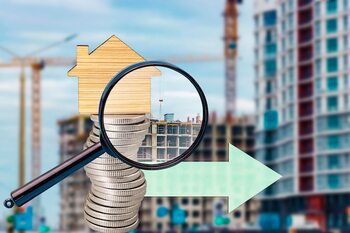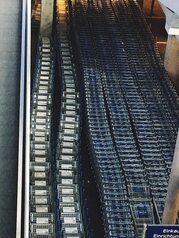The influence of the community on real estate valuation

Real estate valuation not only depends on economic or market factors, but it is also intrinsically linked to the community surrounding a property. Social interaction, available services, and the cultural environment directly influence the appreciation of a property. In this article, we will explore how the community can be a catalyst for increasing property values, transforming neighborhoods and creating attractive investment opportunities for all.
The role of the community in the perception of real estate value.
The community plays a fundamental role in the perception of real estate value, as potential buyers not only evaluate the physical characteristics of a property but also the social environment surrounding it. A neighborhood with an active and cohesive community can attract people looking for not just a place to live, but a lifestyle. The presence of community groups, local events, and cultural activities creates a sense of belonging and security, which is highly valued by those considering purchasing a home in that area. This emotional and social factor can be as decisive as economic aspects in the buying decision.
Additionally, the services available in a community directly impact its valuation. Proximity to quality schools, recreational centers, efficient public transportation, and local businesses significantly contributes to the appreciation of the property. Communities that actively engage in improving their infrastructures and maintaining adequate public spaces tend to experience an increase in their attractiveness to future residents and investors. In this sense, collaboration between neighbors and local authorities not only fosters social development but also acts as a powerful engine to increase the real estate value of the entire area.
2. Services and amenities: How do they affect property value?
The services and amenities available in a community are crucial factors that can significantly elevate the property value. When a neighborhood has quality schools, healthcare centers, parks, sports facilities, and nearby shops, it becomes more attractive to potential buyers and renters. These elements not only enhance the quality of life for its residents but also create a sense of belonging and social cohesion that can be decisive when choosing a place to live. Therefore, it is evident that access to these services directly impacts the perception of real estate value.
Additionally, amenities such as community pools, gyms, or recreational areas can make a property stand out in the market. Often, real estate developers invest in these features to attract different types of buyers, from families to young professionals. The presence of well-designed communal spaces not only fosters social interactions among neighbors but also increases demand for properties in that specific area. As more people seek to reside near these tangible benefits, the property value tends to rise significantly, making the community environment a valuable asset within the real estate sector.
3. Local culture: The key to a desirable neighborhood
Local culture plays a fundamental role in creating a desirable neighborhood, as it reflects the identity and values of its inhabitants. When a community is characterized by vibrant traditions, cultural events, and a rich history, it attracts both residents and visitors. This interaction not only fosters a sense of belonging among neighbors but can also be a magnet for new buyers seeking more than just a property; they want to be part of something meaningful. A neighborhood with vibrant cultural activities, such as festivals, craft fairs, and art exhibitions, is often seen as more attractive and desirable, which inevitably translates into an increase in real estate value.
Additionally, the local culture can influence the quality of life in the neighborhood. Well-designed public spaces that host community activities or cultural centers can enhance relationships among residents and foster a collaborative environment. These factors not only increase the area's appeal to potential buyers but also contribute to the stability of the real estate market by creating a cohesive and active community. Ultimately, investing in properties within neighborhoods with a strong cultural identity can lead to significant long-term financial benefits, turning these areas into hidden gems for savvy investors.
4. Community projects and their impact on the real estate market
Community projects play a crucial role in real estate valuation by fostering a sense of belonging and social cohesion among residents. Initiatives such as the creation of parks, cultural centers, and sports facilities not only beautify the environment but also promote an active and healthy lifestyle. When communities engage in the planning and execution of these projects, closer ties are formed among neighbors, resulting in greater neighborhood stability. This positive environment attracts new residents and investors, who seek properties in areas with a strong community identity and accessible services.
In addition to the social impact, community projects often attract external investments that can radically transform an area. Collaboration between local governments, nonprofit organizations, and private companies can lead to significant improvements in infrastructure and public services. This not only increases the quality of life for current residents but also elevates the area's profile in the real estate market. With each new successful initiative—be it a cultural festival or a commercial revitalization—the neighborhood's reputation as a desirable place to live and invest is strengthened, which in turn fosters sustained growth in the value of local properties.
5. Neighborhood social networks: Building valuable connections
Neighborhood social networks have emerged as a powerful tool to foster meaningful connections among residents of an area. These platforms allow neighbors to share information, organize community events, and collaboratively solve local problems. By building a strong network of mutual support, residents not only improve their quality of life but also create a sense of belonging that can attract new buyers interested in living in a cohesive environment. This active social interaction contributes to strengthening the community fabric, which in turn can positively influence real estate valuation.
Additionally, neighborhood social networks facilitate communication about important aspects that affect daily life, such as safety, maintenance of public spaces, and urban development. When residents actively engage in the management and improvement of the neighborhood through these platforms, they create an environment conducive to local economic growth. Joint initiatives and the constant exchange of ideas lead to projects that can increase demand for properties in the area. Ultimately, this type of collaboration not only enhances the quality of the immediate environment but also drives up real estate value by transforming a common area into a desirable place where people want to live and invest.
6. Security and well-being: Essential elements for valuation
Safety and well-being are fundamental pillars that influence real estate valuation. A safe environment not only provides peace of mind to residents but also attracts potential buyers and investors. When a community has low crime rates and effective security services, it becomes a more desirable place to live. Properties located in areas perceived as safe tend to maintain their value and, in many cases, increase it. Thus, owners can enjoy greater long-term profitability while fostering a sense of belonging among neighbors.
In addition to physical safety, emotional and social well-being also plays a crucial role in real estate valuation. Communities that promote well-being through well-maintained public spaces, community activities, and access to basic services such as education and healthcare are especially attractive to families. Air quality, access to parks and recreational areas, as well as the availability of efficient public transportation significantly contribute to the overall comfort of residents. By creating an environment that prioritizes both safety and the holistic well-being of its inhabitants, communities not only raise their profile among potential tenants or buyers, but also foster stronger social ties that enrich everyday life.
7. Future trends: Sustainable communities and their influence on added value
Sustainable communities are emerging as a key trend in the real estate sector, transforming not only the way living spaces are designed and built but also the perception of their value. The integration of elements such as energy efficiency, the use of recycled materials, and the promotion of green areas contributes to creating environments that promote a healthy and conscious lifestyle. This approach not only attracts buyers interested in improving their quality of life but also piques the interest of investors who recognize the long-term potential these communities offer. As more people seek to live in areas where sustainability is a priority, it is likely that properties situated in these environments will experience a significant increase in their value.
Additionally, sustainable communities foster greater social cohesion by promoting the active participation of their residents in decisions related to local development and public space management. This sense of belonging and collaboration can result in innovative community initiatives that further enhance local infrastructure and available services. As these communities develop and consolidate, they not only increase their appeal to new residents but also raise the prices of surrounding properties. In this context, investing in real estate within communities committed to sustainability not only represents a smart financial decision but also an opportunity to contribute to collective well-being and the environment.



